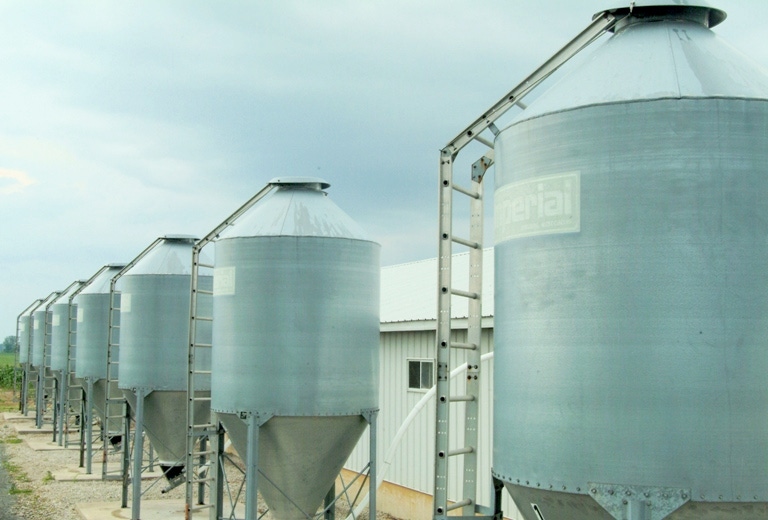Feed typically makes up about 70% of production costs, but it could be 75% or more with the drought. Managing swine diet costs will be critical, says Chris Hostetler, animal science director for the Pork Checkoff, who offers cost-reduction tips.
October 8, 2012

Feed typically makes up about 70% of production costs, but it could be 75% or more with the drought. Managing swine diet costs will be critical, says Chris Hostetler, animal science director for the Pork Checkoff, who offers the following tips:
Decrease feed particle size. Every change of 100 microns impacts feed efficiency by 1.2%. Going from 750 to 600 microns results in substantial savings. In most cases, 600 microns is not fine enough for ulcer problems, but feed dust will increase.
Adjust feeders to reduce waste. Minor adjustments of feed bins and transport systems can create big savings. Kansas State University recommends that you:
• Close feeders completely after cleaning and before putting in any feed.
• Open feeders just far enough to start small feed flow.
• Shake feeders to increase pellets or meal in the pan (to cover 1/3 of pan).
• Clean corners daily instead of increasing feeder adjustment to increase feed flow.
• Prevent moisture damage and spoilage in feed systems and storage.
• Eliminate rodents, birds and other pests.
• Refer to feeder adjustment cards that show properly adjusted feeders for nursery, grow-finish and lactation.
Look for alternative feed ingredients. Alternative feedstuffs and byproducts – bakery products, glycerin (from biodiesel manufacturing), poultry fat, etc. – are available in many areas. Determine the nutritional profile of an alternative feedstuff and its feeding value at the price quoted before you decide to use it. Also, understand the form in which it will be delivered, so extra labor or machinery is not required to make it practical. The Pork Checkoff publication, Alternative Feed Ingredients in Swine Diets, offers more information.
Use crystalline amino acids to replace protein ingredients. The cost of many crystalline amino acids (lysine, methionine, tryptophan, threonine) has decreased to the extent that replacing soybean meal can result in a palatable, semi-synthetic pig diet with real cost savings. Aggressively monitor ingredient prices and reformulate rations accordingly. The University of Nebraska provides more tips in a publication entitled, Role of Crystalline Amino Acids in Reducing Grow-finish Feed Costs.
For more information, contact Chris Hostetler at [email protected] or at (515) 223-3447. Additional drought resources from the Pork Checkoff are available on www.pork.org.
You May Also Like



